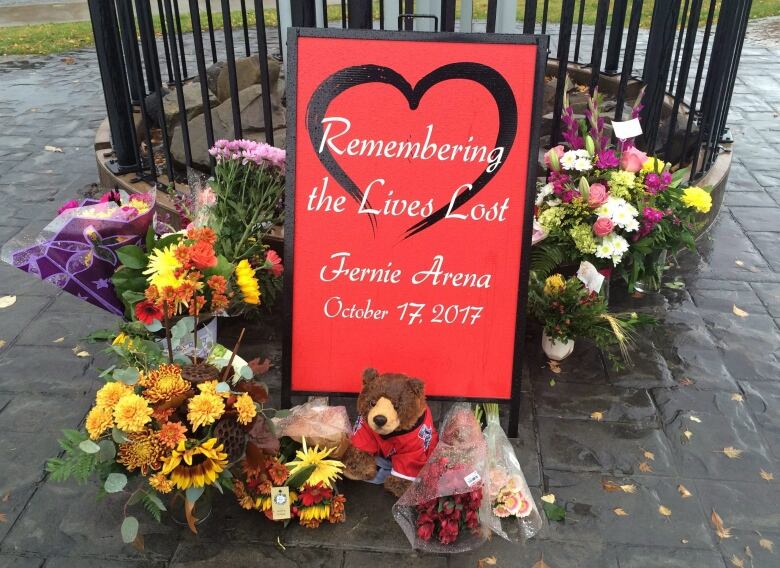Ice rinks at a crossroads: after Fernie tragedy, how to make arenas safer?
Arena operators take a second look at safety after ammonia exposure killed three rink workers in Fernie

It will take months to know what led to the ammonia leak that killed three men at the Fernie Memorial Arena last week.
But in the aftermath of the tragedy, and the evacuation and state of emergency that followed, rink operators everywhere are taking a closer look at safety and operating procedures.
Canlan Ice Sports in North Vancouver is one example. Earlier this week, it underwent an unscheduled shutdown of all three rinks in order to upgrade a 20-year-old ammonia refrigeration system.

"Our checks and balances are always in place but the Fernie incident was sobering to the entire industry," said Canlan President and CEO Joey St-Aubin.
"We had a chiller replacement scheduled for early 2018 and we did some recent tests and saw that there was some potential weakness in the system. So we decided to move that replacement up as a preemptive measure."
St-Aubin said the new chiller also uses ammonia as the cooling agent.
At one time, ammonia was the only refrigerant used in Canadian rinks, but today about 25 per cent have converted to Freon gas.
Ammonia the most toxic
From a public safety standpoint, Freon is a substantially safer compound according to the Canadian Standards Association mechanical refrigeration code, which ranks ammonia in the most toxic B2 category.
Still, in the ice rink business, debate rages over the cost and safety of Freon, its performance and greenhouse effects.

In fact, in the last week both the City of Vancouver and City of Montreal publicly stated that ammonia refrigeration is still the safest option.
Dawson Creek makes the switch
Three years ago, when an ammonia leak forced a season-long shutdown of both the Dawson Creek Curling Club and Memorial Arena, city officials there plunged headlong into the ammonia versus Freon debate, trying to decide how best to get the two facilities operational again.
Although the leak was contained and no one was injured, concern over the proximity of a middle school located directly behind the two rinks factored into the discussion.

A report commissioned from TFM Consultants International laid out the pros and cons.
It noted that while ammonia was an efficient coolant with zero greenhouse impact, "it is a deadly toxin if released as gas. Any unprotected human contact with ammonia gas will result in death or serious permanent impairment."
It went on to state that "the positives associated with Freon are that it is non-toxic and non-corrosive. There are no public safety issues or employee safety issues associated with its use."
No engineer required
Dawson Creek eventually decided on Freon to replace its aging ammonia plant, partly due to the risk concerns but also because of a staffing issue — the Freon system didn't require the daily oversight of a certified refrigeration engineer.
"We compete in the north with the oil and gas sector and the ammonia plant required a refrigerator operator...so we struggled to fill those positions," said the city's chief administrative officer Duncan Redfearn.
"The ongoing operation [of the Freon system] was going to be minimal."

According to data released by Technical Safety B.C., the body that oversees arena ice plants, there were 19 ammonia release incidents in provincial arenas between 2007 and 2015.
Don't put your mouth on that
Seven of those resulted in ammonia exposure for one or more people, including a 2015 incident at an undisclosed rink where a worker suffered mouth burns trying to siphon an ammonia-water mixture.
A former chief boiler inspector for B.C. told CBC News that in his opinion, aging ammonia systems, combined with inadequate inspection and maintenance standards, pose a serious risk in B.C. rinks.
"I can walk with you and your camera crew in ten arenas at random and we will find probably 20 to 30 non-compliance issues," said Lou Roussinos.
"I have tried, even when I was chief inspector to remove [ammonia]. It is difficult," he said. "Arenas are dangerous places and people don't recognize that."